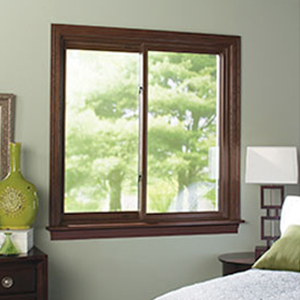Condensation is a sure sign that your home windows should be changed.
Windows are an important barrier between the extreme, variable weather conditions outside and our calmness, constant house temperatures. Home replacement windows quite often have a fifteen to twenty-year lifespan, so luckily we do not have to think about changing them too often. However understanding when it's time to replace them can be tricky. You might be tempted to try and hold out for another season if you recognize the warning signs. But changing your home windows currently could help you expand the life of your whole house as well as maintain you as well as your family members warm all winter long. Right here are a couple of indicators that your windows are not all set for the harsh winter season this year.
Drafty House
As windows age, they start diminishing, breaking, and also not shutting properly, allowing air from inside your the home of spurt. As a result of this, your HVAC system battles to maintain your home at a continuous temperature and sends your power expenses skyrocketing. If your home is visibly extra drafty or your electric costs seem to be going up this fall for no apparent reason, you may wish to have your home windows took a look at.
Difficult to Lock
We take pleasure in having our home windows open when the weather behaves, but they shouldn't be open every one of the time. During the winter months and when we're away, your home windows should be shut in location and also secured. Windows with malfunctioning locks is a major security threat that should be treated as soon as possible to maintain your family safe. Often the lock can be repaired cheaply, yet if the home window is having problem remaining open or shut or is leaking air, it might be best to just install a new one.
Condensation Forming
The greatest indicator that you require new windows is when condensation starts to base on the within your home window when it is shut and locked. This is a sign of a most likely irreversible defect and ought to be addressed as soon as possible to prevent the possible growth of mold in the structure, which can infect various other areas of your residence as well as cause significant damage when left untreated.
Have you nearly had it with your old, drafty home windows?
Is this the year you've chosen to ultimately replace your home windows? Changing your windows with new ones features great deals of benefits, including a power performance increase, far better air flow, and much better top quality of light in your home. The National Fenestration Ranking Council certifies and identifies home windows (along with doors and also skylights) on their performance and energy effectiveness. When you're buying brand-new home windows you'll see these rankings on the NFRC tag. In this week's blog site, we'll speak about how you can read this tag making certain you're making an educated decision on your new windows.
Heat Gain and also Loss
The initial 3 buildings on the tag have to do with just how the home window carries out with regard to warmth gain as well as loss. Windows gain as well as lose heat in 3 methods:
Direct transmission through the glass.
Radiation of warmth from the sun right into your home, and away from the house from items in the house.
Air leak through and also around the window.
U-factor
This is "The price at which a home window, door, or skylight carries out non-solar heat circulation." The takeaway here is "The lower the U-factor, the more energy-efficient the window, door, or skylight."

Solar Heat Gain Coefficient
The SHGC tells us just how much radiation is admitted through the home window and also launched as warmth in the house. The lower the number, the less warmth is transmitted. Nonetheless, this does not necessarily imply you want a reduced SHGC. As an example, since a higher SGHC means the home window enables much more warmth in, you could allow more solar warmth inside in the wintertime, which could lower your heating requirements. In this instance, the climate you stay in will play a major consider choosing an SHGC ranking.
Air Leakage
This measures how much air the window allows relative to a certain stress difference across it. The lower the ranking, the less air leakage.
Sunlight Passage
The following 2 ratings determine just how much light a home window allows into your home.
Visible Transmittance (VT).
This number between 0 and also 1 actions what fraction of the range of noticeable light the home window lets through. The greater the portion, the extra light the home window will certainly permit. If you intend to use daylighting in your house, you'll desire a greater fraction. If you intend to reduce interior glare, you may want a reduced portion.
Light-to-Solar Gain.
This number is the ratio between the SHGC and also Windows the VT. "The greater the number, the a lot more light transferred without adding excessive quantities of warm.".